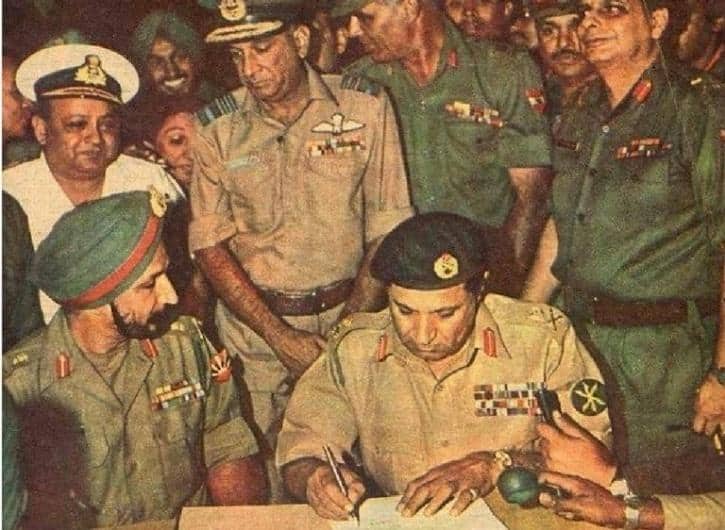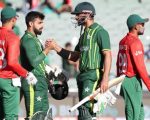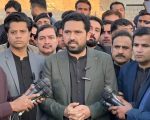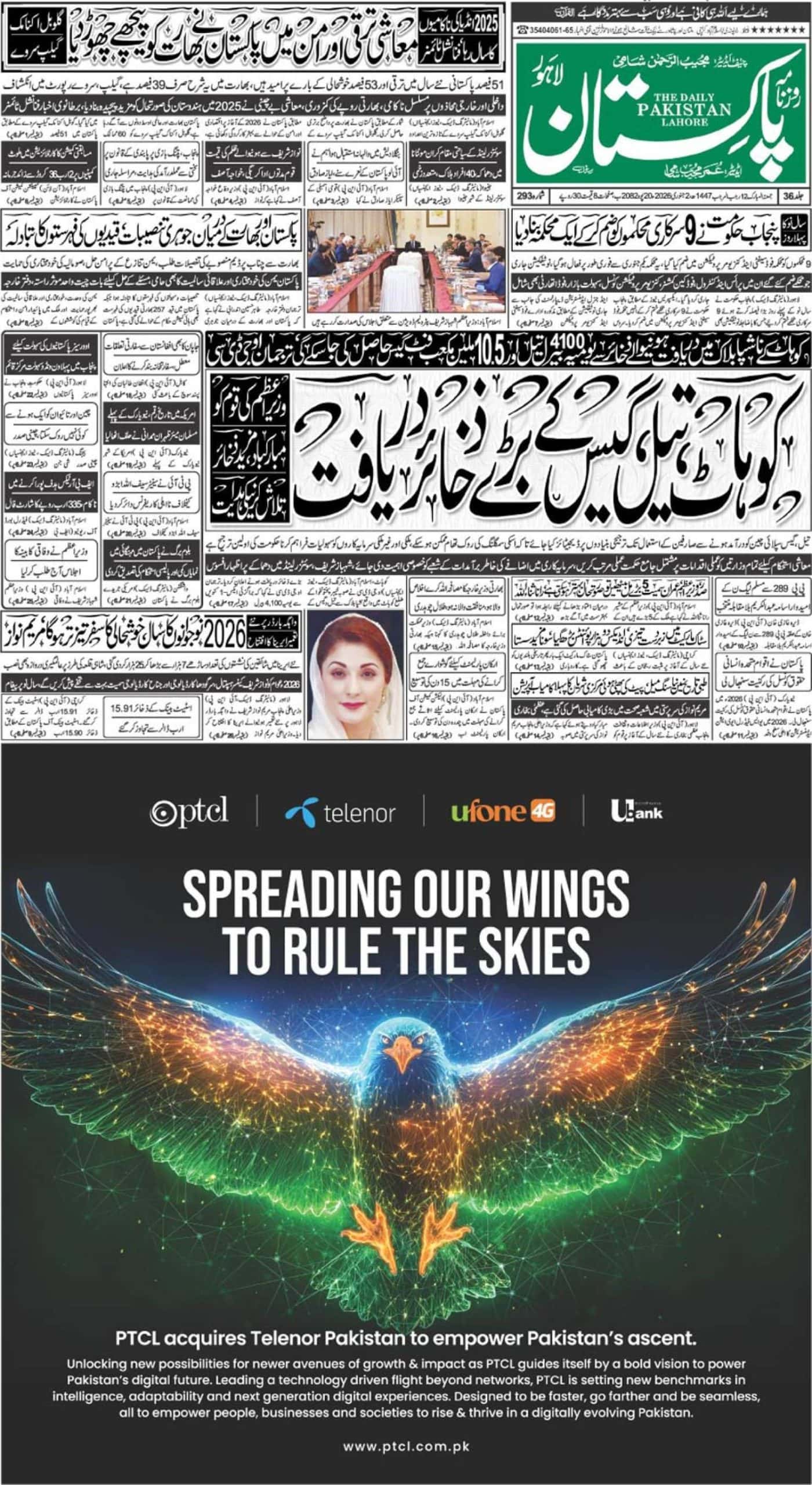The 16th of December each year brings with it a painful reminder of the fall of Dhaka 1971, which has not been adequately reflected upon in Pakistani historical discourse, resulting in various myths being associated with this national tragedy.
One of the myths repeated every year is that the state of Pakistan created in light of the dream of Allama Iqbal, the idea of Chaudhry Rehmat Ali and the Two Nation Theory of Qaid e Azam Mohammad Ali Jinnah has been lost. That today’s Pakistan is only half of the country envisioned by the founding fathers, thereby casting aspirations upon the legitimacy of the very struggle of the Pakistan Movement, and sacrifice of millions of lives lost at independence. In order to debunk this myth, it is necessary to reflect upon the political factors that place East Bengal’s union with Pakistan in its proper historical context.
All India Muslim League was formed in the year 1906 to secure the rights of Muslims of subcontinent within the constitutional limits of the British Raj, founders of Muslim League considered Urdu as the representative language of the Muslims of the Indian subcontinent, and all its resolutions were drawn in Urdu. However, Muslim political leaders from Bengal deemed the political interests of Bengali Muslims unique to Bengal politics, and therefore on the 2nd of March 1912 they formed Bengal Provincial Muslim League in Dhaka as a branch of the parent organisation of All India Muslim League. A significant difference was that its resolutions were drawn in Bangla, and its politics focused solely on the welfare of Muslims of Bengal. Hussain Shaheed Suhrawardy, Abdul Hasheem, and AK Fazle Haq remained at the helm of its affairs, and the central Muslim League dealt with Bengal politics only through BPML.
The idea of a separate state as a homeland for the Muslims of the subcontinent was first envisioned by Allama Iqbal, when on the 29th of December 1930 he delivered a monumental address, saying:
“I would like to see the Punjab, North-West Frontier Province, Sind and Baluchistan amalgamated into a single State. Self-government within the British Empire, or without the British Empire, the formation of a consolidated North-West Indian Muslim State appears to me to be the final destiny of the Muslims, at least of North-West India.” [1]

It’s important to note that this dream of Iqbal only consisted upon the current four provinces of Pakistan, and did not include the provinces of Hyderabad Deccan or Bengal, knowing full well the practical impossibility of uniting all Muslim populated areas of the subcontinent into a single state.
The concrete concept of Pakistan as an independent state was conceived by Choudhary Rahmat Ali, when he published a pamphlet on the 28th of January 1933 titled “Now or Never; Are We to Live or Perish Forever?”
In this pamphlet the word Pakistan is deemed to have composed with letters from the names of five northern units of British India with ‘P’ for Punjab, ‘A’ for Afghania (North-West Province of KPK), ‘K’ for Kashmir, ‘S’ for Sindh and ‘STAN’ for the province of Balochistan.
He wrote, “At this solemn hour in the history of India, when British and Indian delegates are laying the foundations of a Federal Constitution for that Sub-continent, we address this appeal to you, in the name of our common heritage, and on behalf of our thirty million Muslim brethren who live in PAKISTAN by which we mean the five Northern units of India viz: Punjab, North-West Frontier Province (Afghan Province), Kashmir, Sind, and Baluchistan.” Here again, Bengal was not envisioned as being a part of the future state of Pakistan, instead, he presented it as a separate state of ‘Bangistan’ or ‘Bangalistan’ as a future homeland of the Muslims of the north eastern part of British India.

Independence of United Bengal There is no historical evidence to suggest that Qaid-e-Azam Muhammad Ali Jinnah ever suggested Bengal as an eastern wing of a future state of Pakistan during the campaign for Pakistan Movement. The Qaid, in fact, encouraged leaders of Bengal Provincial Muslim League to campaign for an independent state of Bengal and this effort came to be known as the United Bengal Movement.
BPML leaders themselves realised that the rights of the Muslims of Bengal would be best protected within an independent state of undivided Bengal, with the coal mines, and the jute mills of eastern Bengal supplying the industrial plants in western Bengal. The largest city in India at the time was Calcutta which would’ve served as an industrial, commercial hub and the largest port for Bengal as an independent country. They campaigned vigorously for a United Bengal with the full support of the Pakistan Muslim League and Qaid e Azam Muhammad Ali Jinnah.
Towards this goal HS Suhrawardy, Abdul Haseem, and Fazlul Qadir Chaudhry entered into negotiations with Bengal provincial congress leaders such as Sarat Chandra Bose, Satya Ranjan Bakshi and, Kiran Shankar Roy. These negotiations succeeded to such a great extent that a formal proposal for the Free State of Bengal with the blessing of the British Governor of Bengal Sir Frederick John Burrows was issued on the 20th of May 1947.

Independence of United Bengal as a country failed only due to vehement opposition of Hindu Mahasabha’s Shyama Prasad Mukherjee, Nehru and Patel of Indian National Congress, who feared to lose Calcutta as the industrial powerhouse and a major port city as part of an independent India. Not only did they reject the plan, but even sought partition of Bengal along communal lines. They brought to bear all the political power and goodwill Congress had with Lord Mountbatten in a campaign against this proposal. This resulted in aggravating Hindu-Muslim tensions, eventually, on June 3rd 1947 British Viceroy Lord Mountbatten announced plans for the partition, and division of Bengal along communal lines. This proved to be the death of the idea of a united Bengal as an independent country. Madhuri Bose, the granddaughter of Surat Chandra Bose in her book published in 2016, clearly held Congress responsible for the failure of a United Bengal as an independent country.[2]
After it became clear that, if Bengal is to be an independent state, it would only comprise upon areas of East Bengal. A realization prevailed among the leadership of the Pakistan Movement that such a state would almost certainly prove economically, politically, and socially disastrous; only then did BPML leaders approached Central Muslim League leadership, and sought to join the dominion of Pakistan as its eastern province at partition.
Qaid e Azam Muhammad Ali Jinnah know full well, that Kolkata was the centre of Bengal’s economic and social development. All large industries, military bases, government offices and most of the institutions of higher education were situated in West Bengal without which East Bengal was decapitated. Dhaka at that time was only a district headquarters and even the majority of high-ranking officers in British Indian administration were Hindu, who would migrate to West Bengal. Hence, East Bengal was accepted as the eastern wing of an independent Pakistan in spite of its geographic distance, limited resources and enormity of the challenge to effectively govern two separate wings of a newly independent country.
This union was formed specifically to support the Muslim population of Bengal to help develop their economic, political, and administrative structures free of any Hindu political hegemony. Perhaps, with an understanding that East Bengal would be able to gain autonomy at a later date when it becomes strong enough to survive despite being geographically encircled by a hostile Hindu dominated India.
It was entirely in this context that Qaid e Azam did not relent on the acceptance of Bangla as one of the official languages of Pakistan, since it would open the door to ethnic and linguistic tensions within the newly independent state of Pakistan, with every ethnic group claiming space for its regional language without adoption of a national language for all regions of Pakistan.
This ethnic and linguistic tension between eastern and western wings of Pakistan remained despite Bengali political leaders such as Khawaja Nazimuddin, Mohammed Ali Bogra, Huseyn Suhrawardy and Fazlul Qadir Chaudhry occupying highest national offices of the state.

The Two-Unit system was created specifically to provide political space to the ethnic and linguistic aspirations of the eastern province of Pakistan, but tensions continued, in part by Indian sponsored seditious activities of some Awami league leaders. These tensions helped feed an increasing realization among all leading parties of Pakistan that the state of this union was proving to be unnatural, and a political solution needs to be amicably reached.
Henry Kissinger the former US Secretary of State in the December 2016 issue of ‘The Atlantic,’ told Jeffrey Goldberg in a fairly exhaustive interview that he and Nixon had already reached a deal with President Yahya Khan in November 1971 where Pakistan would grant independence to Bangladesh in March 1972.
However, the ranks of Awami League was infested with Indian sponsored politicians who not only worked towards an independent Bangladesh, but were helping provide a basis for fragmentation of West Pakistan, with Pashtunistan, Sindhudesh, and an independent Balochistan.
This notion is proved true by the historical facts related to the conspiracy that was uncovered by ISI, and later became known as the Agartala Conspiracy Case. In 2010, a surviving conspirator and deputy speaker of parliament of Bangladesh Shaukat Ali confessed proudly on record at a point of order on the floor of the house that the charges read out to them during Agartala conspiracy case were accurate, stating that he along with Sheikh Mujib were a part of the ‘Shangram Parishad’ (Action Committee) for the secession of East Pakistan.
The reality of this conspiracy saw the light of day when Indian Army invaded East Pakistan in coordination with the Indian sponsored and trained militant Mukhti Bahinis and despite earlier denials helped Awami League’s political leadership declare secession from Pakistan. This proved to a big blow to the idea of an independent Pakistan, free from the political influence of a hostile Hindu supremacist leadership in India. However, the myth surrounding the breakup of Pakistan as it was conceived by the founding fathers is not proved when looked at in relevant historical context.
From the very beginning not only the founding fathers of Pakistan, leaders of the Pakistan Movement, politicians of the All India Muslim League, even leaders of Bengal Provincial Muslim League and even Awami League leadership didn’t consider Bengal as an integral part of Pakistan. It was a union of convenience, that was created not to provide any strategic advantage to West Pakistan, but to specifically support and benefit the Muslim population of East Bengal, against religious domination of Hindu supremacist political forces of India.
Hence, on the 16th of December each year though we may regret the tragic end to the union of East Pakistan with West Pakistan. We must not mourn this date as the breakup of Pakistan, for Pakistan survives. Through ups and the downs, through trials and tribulations, and through war and unrest the Pakistan of Iqbal, the Pakistan of Chaudhry Rehmat Ali and the Pakistan of Qaid e Azam Muhammad Ali Jinnah is alive and well.
[1] A.R. Tariq (ed.), Speeches and Statements of Iqbal (Lahore: 1973)
[2] The Bose Brothers by Madhuri Bose. 28 January 2016.














